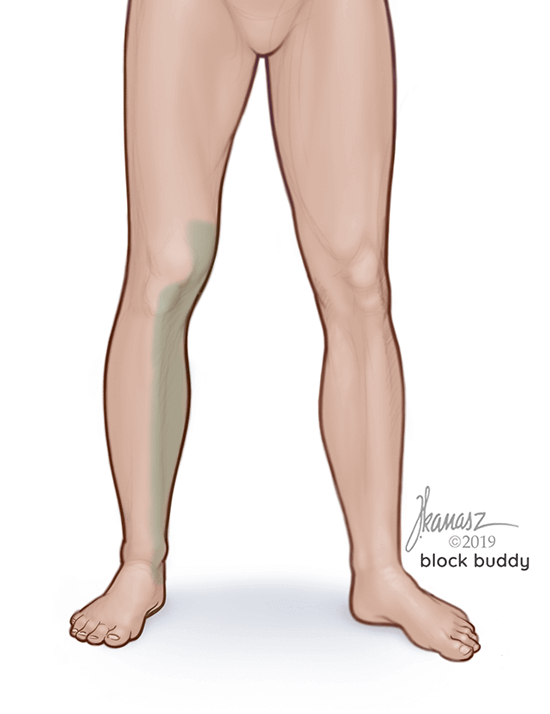Adductor Canal Block

The adductor canal block is a regional anesthesia technique that is performed for surgical procedures involving the knee and the medial aspect of the lower leg and ankle. Procedures that may require an adductor canal block include:
- Knee replacement
- ACL repair
- ORIF (Open reduction and internal fixation) of the ankle.
Overview of the Adductor Canal Block
The adductor canal block can be performed along with a popliteal sciatic nerve block to provide complete anesthesia of the lower leg below the knee. Compared to the femoral nerve block, the adductor canal block preserves quadriceps function and allows for earlier ambulation after surgery. Performing adductor canal blocks decreases intraoperative anesthetic requirements, reduces postoperative nausea and vomiting, and shortens the length of stay in recovery. They also reduce post-surgical pain, which minimizes or avoids the need for opioid medications.
Risks and Side Effects
Any procedure that involves anesthesia comes with its own set of risks. Some risks and complications may include:
- Local anesthetic systemic toxicity (LAST)
- Infection
- Allergic reaction
- Nerve injury
- Hematoma
- Quadriceps weakness can occur from the spread of local anesthetic within the femoral triangle. Avoid performing the block within the proximal adductor canal or using larger volumes of local anesthetic.
How to Perform an Adductor Canal Block
The adductor canal block provides anesthesia to the anteromedial knee and the medial aspect of the lower leg, ankle, and foot. This is a sensory block and preserves motor function of the lower extremity. Place the patient in the supine position, with the leg externally rotated to allow access to the medial thigh.
At the level of the mid-thigh, local anesthetic is deposited around the saphenous nerve within the adductor canal. Use ultrasound imaging to locate the saphenous nerve, a small, round, hyperechoic structure lateral to the femoral artery. The nerve to the vastus medialis muscle is located outside the adductor canal and is not reliably blocked with this approach.
For a more comprehensive review of this block, use the Block Buddy Pro app.
Get Complete Instructions in the Block Buddy Pro App
Block Buddy Pro is the ultimate resource to help anesthesia providers administer ultrasound-guided nerve blocks. Specifically, the Adductor Canal Block Lesson in the Block Buddy Pro app includes:
- Simple instructions that are easy to follow and understand.
- 13 images consisting of detailed illustrations, ultrasound images, and photos from inside the operating room.
- A narrated video with step-by-step instructions.
- An equipment list, CPT codes, and more!
You will also gain access to lots of other detailed lessons with their own step-by-step instructions, images, and videos. You can even add important notes directly in the app, and have access anytime, anywhere with offline mode. Block Buddy Pro is available on all devices (mobile, tablet and desktop) and can be purchased in the App Store and Google Play Store. To get started, simply create your account now!
